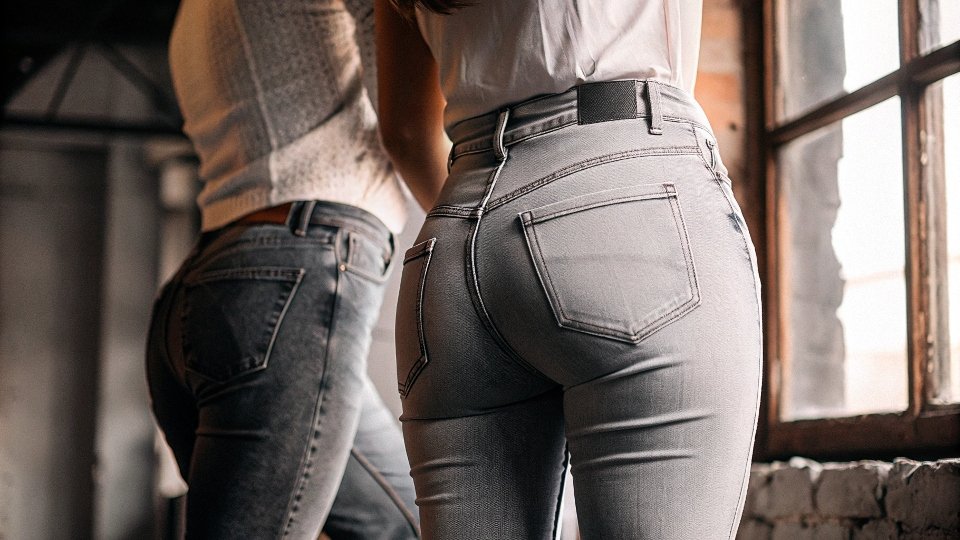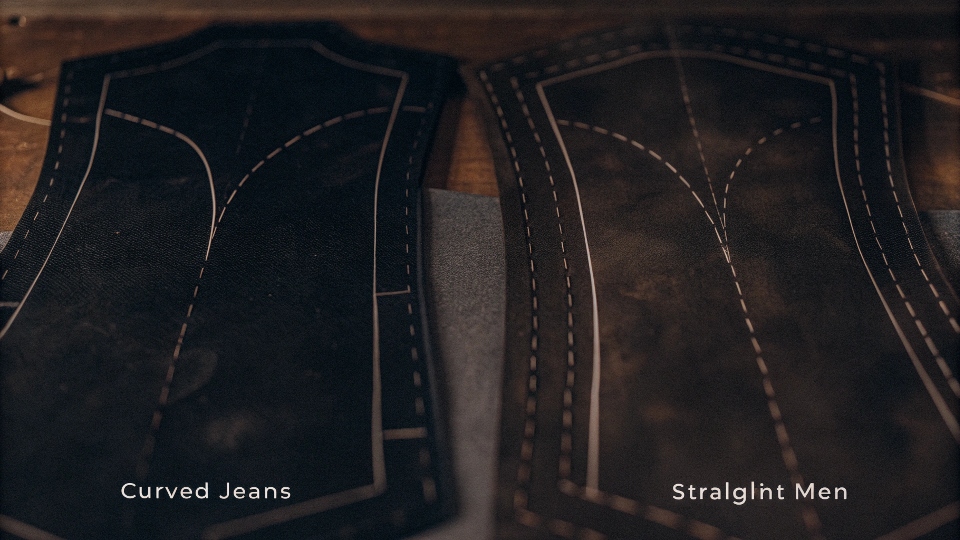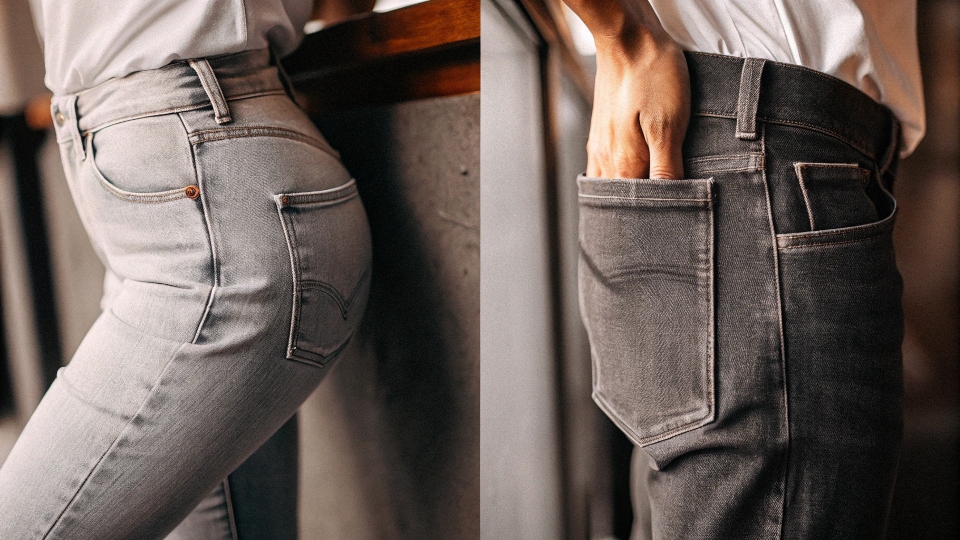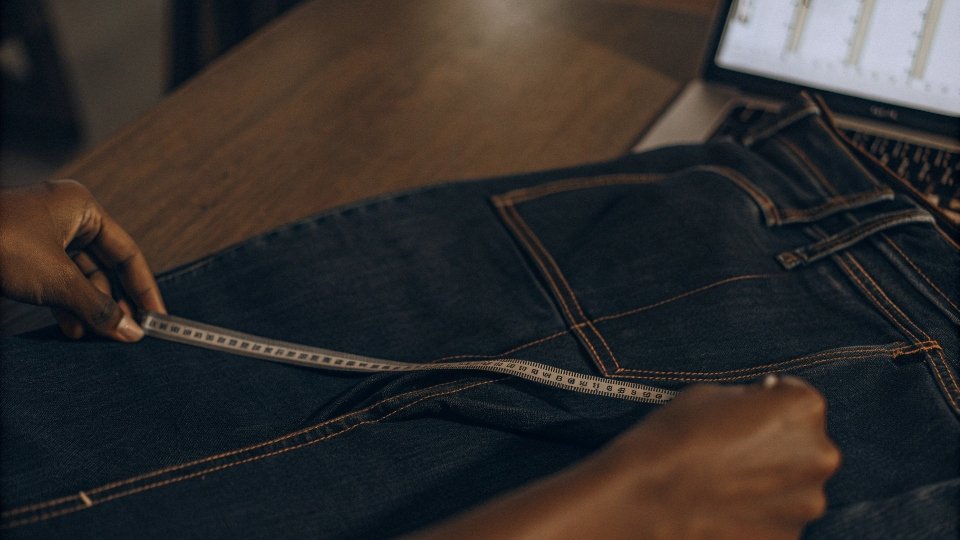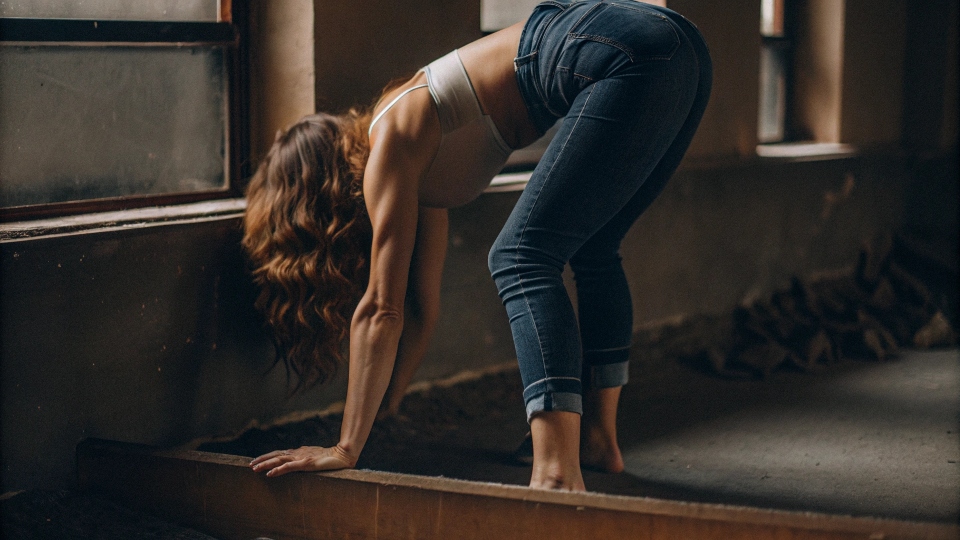Many men feel like finding a great pair of jeans1 is impossible. They're too baggy in the seat, too tight in the thighs, or just plain shapeless. It makes you wonder if jeans are even designed for a man's body.
Women's jeans often appear to fit better because their design is fundamentally focused on accommodating curves, using stretch fabrics2 and varied cuts to sculpt and flatter. Men's jeans have a history in workwear, traditionally prioritizing durability and a straight, functional fit.
From my factory floor, I can tell you that the starting patterns for men's and women's jeans look like they are for two completely different garments.
It's not just about size; it's about a different design philosophy3. A woman's jean is engineered to trace the body, while a man's jean is built to hang on the body. This core difference explains why so many people feel women's jeans4 offer a superior fit. Let's get into the specifics of why that is.
Why do women's jeans fit better?
You try on countless pairs of men's jeans, but none seem to fit quite right. You want a pair that looks tailored and sharp, not just a baggy tube of denim.
Women's jeans are designed to solve a more complex geometric problem: the waist-to-hip ratio5. Their patterns are cut with more curve and they often use stretchier fabric to hug the body, creating a contoured fit that most men's jeans don't offer.
When we get a design for women's jeans, the pattern pieces aren't straight. There's a significant curve built into the pattern that runs from the waist down to the hip. This is specifically to accommodate a smaller waist and fuller hips.
It's what prevents that annoying gap at the back of the waistband. Men’s jeans are typically cut with a much straighter seam. Furthermore, the variety in women's leg shapes—skinny, flare, bootcut, mom—is all about silhouette manipulation6. A skinny jean elongates the leg, while a flare balances out the hips. Men's styles are far more limited, usually just straight, slim, or relaxed, with less focus on body shaping.
This difference in design intent is the main reason why a pair of women's jeans can look so much more tailored.
Is there any difference between men and women jeans?
You might think a jean is just a jean, but the differences are woven into the very fabric and cut. It feels like they come from two separate worlds of clothing design.
Yes, the differences are significant. They include the cut (curvy for women, straight for men), fabric (more stretch in women's), rise (more variety in women's), and details like pocket size7 and button placement. Each detail serves a different purpose.
Having made millions of pairs of both, I can list the differences instantly. They go far beyond just the general shape. We use different materials and hardware for each.
| Feature | Women's Jeans | Men's Jeans |
|---|---|---|
| Primary Goal | To flatter and shape the body. | To be functional and durable. |
| Cut | Curved pattern for hips and waist. | Straight pattern with minimal shaping. |
| Fabric | Often includes 2-5% spandex for stretch. | Traditionally 100% cotton, heavier denim. |
| Pockets | Often small and shallow for a smoother look. | Large and deep for practicality. |
| Rise | Wide variety: low-rise, mid-rise, high-rise. | Mostly standard mid-rise. |
| Sizing | Abstract numbers (e.g., 6, 8, 10) that vary by brand. | Based on measurements (e.g., 32x34). |
These aren't just minor tweaks; they reflect a fundamental split in design philosophy. One is a fashion item designed to enhance appearance, and the other has its roots in practical workwear. Even though men's jeans have become more fashion-conscious, these core differences remain.
What is a size 32 in women's jeans equivalent to?
You're a man who wears a size 32, and you've found a pair of women's jeans you want to try. You look at the tag and see numbers like 10, 12, or 31, feeling completely lost.
A men's size 32 waist is most similar to a women's waist size of 31 or a numeric size 12. However, women's sizing is notoriously inconsistent, so you must rely on the brand's specific measurement chart, not a general conversion.
This is one of the most frustrating things about shopping across genders. Men's sizing is logical and direct: the number is the measurement in inches. A size 32 means a 32-inch waist.
Women's sizing is an abstract system that can feel random. A size 12 in one brand might have a 31-inch waist, while in another it might be 33 inches.
This is often called "vanity sizing." As a manufacturer, we get spec sheets from different brands for the same "size" and the measurements can be completely different.
Because of this, never trust a simple conversion chart. The only way to know for sure is to measure the waist of a pair of your own pants that fit well, and then compare that measurement in inches or centimeters to the size chart of the women's jeans you want to buy.
Why do women wear their pants so tight?
You see women wearing incredibly tight jeans and wonder how they can possibly be comfortable. It seems like a fashion choice that must sacrifice all comfort for the sake of style.
Women often wear tight jeans because modern stretch denim makes it possible. The fabric contains materials like spandex, allowing the jeans to hug the body for a flattering look without being restrictive. It’s a way to achieve a sculpted silhouette that is actually comfortable.
The secret is in the fabric. A pair of tight, 100% cotton jeans from 30 years ago would be incredibly uncomfortable.
But today, almost all women's skinny jeans have at least 2% spandex or elastane woven into the cotton. In my factory, we call this "comfort stretch8." This small amount of stretch material makes a huge difference. It allows the fabric to move with the body, so you can bend, sit, and walk without feeling constricted. The fashion goal of a skinny jean is to create a long, lean leg line and a smooth silhouette. The technology of stretch fabric is what makes this popular style actually wearable for everyday life. It’s less about sacrificing comfort and more about how fabric innovation9 has allowed fashion to create new shapes that are both flattering and functional.
Conclusion
Women’s jeans fit differently because they are designed differently, using curvy patterns and stretch fabrics to shape the body. While men's jeans are catching up, their workwear history still influences their standard fit.
-
Discover expert advice on selecting jeans that fit perfectly and enhance your style. ↩
-
Discover how stretch fabrics improve comfort and fit in modern jeans. ↩
-
Learn about the fundamental differences in design philosophy that affect fit and comfort. ↩
-
Explore insights into the design and fit of women's jeans that make them more flattering. ↩
-
Understand the importance of waist-to-hip ratio in achieving a flattering fit in jeans. ↩
-
Learn how different cuts and styles create flattering silhouettes in women's jeans. ↩
-
Explore the functional differences in pocket sizes and their impact on style. ↩
-
Discover how comfort stretch technology enhances the wearability of tight jeans. ↩
-
Learn how advancements in fabric technology are changing the way jeans fit and feel. ↩

